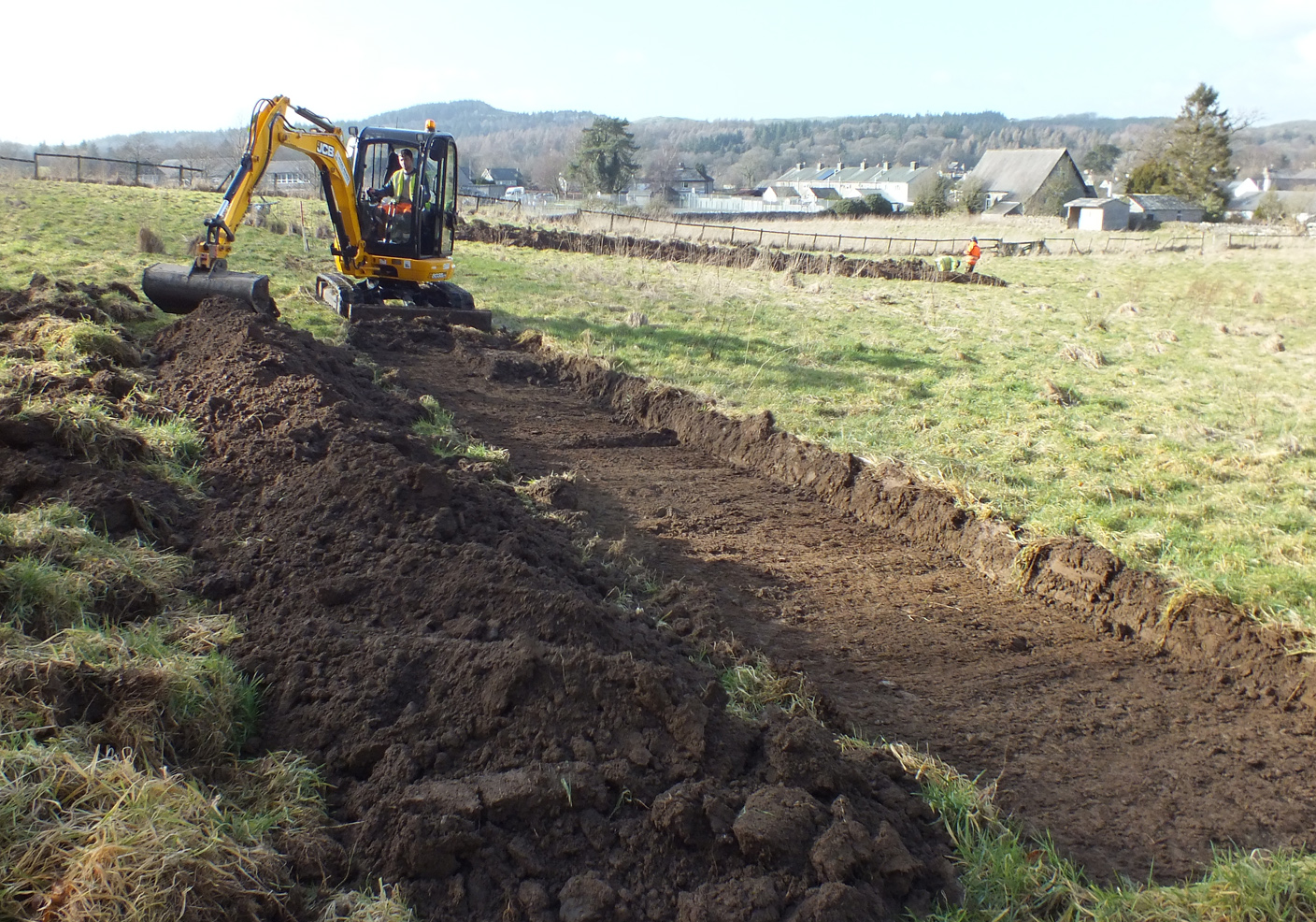Land off Haggs Lane, Cartmel, Cumbria: Archaeological Evaluation
Following the completion of an earlier archaeological desk-based assessment and geophysical survey a planning application was submitted for the construction of 39 dwelling on land off Haggs Lane, Cartmel, Cumbria. A condition was placed on the decision notice for this application requiring an archaeological evaluation and Greenlane Archaeology was commissioned to carry out this work. The project was completed in February and March 2018.
The site is situated to the south-east of the centre of the village of Cartmel, to the south of Haggs Lane. The map regression demonstrates that the site has been an open field since at least 1807 and that while it essentially still is, the area to the north has seen some recent development and the original field is now sub-divided by wooden fences. While there is evidence from the prehistoric period onwards the known history of the site is inevitably dominated by the development of Cartmel Priory in the late 12th century, which is generally where previous archaeological work in the village has been focussed. The site is close to at least one area of potentially early iron mining and the name of the nearby Pit Farm to the north might be indicative of more in the locality. The geophysical survey revealed a number of essentially linear anomalies of possible archaeological interest, which were targeted during the evaluation.
The evaluation comprised the excavation of six trenches, five of which were 22m long and one of which was 44m, all of which were approximately 2m wide. In each case a similar range of deposits was encountered; a topsoil, subsoil, and then natural geology, with bedrock exposed in three of the six trenches. Only in Trench 1 was anything of potential archaeological interest encountered, but this just comprised an area of boulders in the subsoil, which did not form any obvious structure and probably represents either naturally occurring material at the base of the slope or a dump of stone. This deposit probably resulted in the geophysical anomaly evident in this area and in two of the other trenches the geophysical anomalies were found to relate to natural geological features.
No deposits or features of archaeological interest were otherwise revealed and it is remarkable how few artefacts were discovered across the site and how late in date many of these were, suggesting that the site has seen relatively little previous development.
The full report will be made available on the Archaeology Data Service website.




